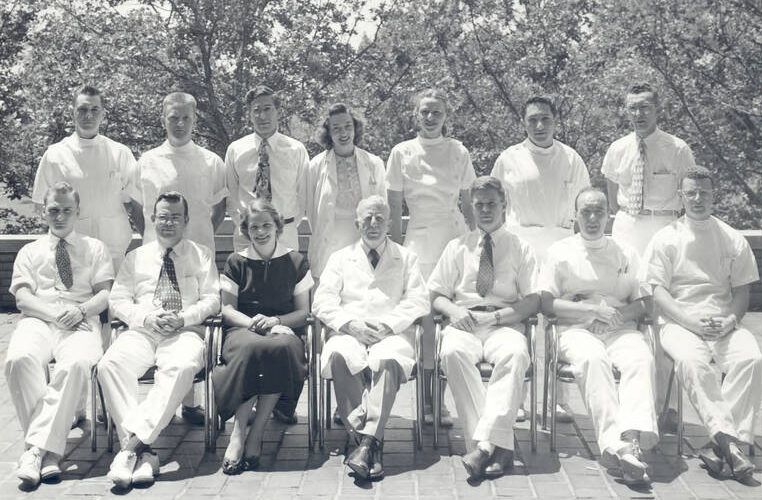The Division of Allergy and Immunology at Washington University School of Medicine has links back to the beginning of the field, when the specialty that became known as allergy started in New York in the early 1900s.
Today the division, which at one time had only two full-time faculty who primarily focused on research, has become one of the leading providers of patient care, comprehensive adult and pediatric training and nationally and internationally recognized physician scientists in the field of allergy and immunology.
The division was founded in the early 1960s by Dr. Charles Parker, a clinician and researcher widely recognized for his work in identifying the basis for penicillin allergy and for defining the structure of leukotrienes, major mediators of the inflammatory response in asthma and other allergic disorders. Continuing in that tradition, our physicians today are providing state-of-the-art clinical care based on leading-edge research.
The Division of Allergy and Immunology was among the first divisions of a Department of Medicine solely devoted to the care of patients with atopic diseases and research into the diagnosis and management of allergic disease in the country. Our training program in allergy and immunology is the third oldest in the nation.
The field of allergy was largely initiated in the United States by Dr. Robert Cooke and Dr. Arthur Coca, who started the first allergy clinic at Cornell University in New York. Cooke, who standardized allergy skin testing procedures and popularized allergy immunotherapy, trained Dr. Harry Alexander, who set up the first allergy clinic in the Midwest at the former Jewish Hospital and began training physicians in the sub-specialty of allergy. At the same time, Dr. Richard Eyermann followed by Dr. Stanley Hampton started an asthma clinic at Washington University School of Medicine.


Washington University School of Medicine was also an early leader in the field of immunology. Parker, a trained immunochemist who was a house officer in Internal Medicine at Barnes Hospital and the Medicine Chief Resident, established the Division of Allergy and Immunology within the Department of Medicine and combined the division with the Allergy Clinics at Barnes Hospital and The Jewish Hospital of St. Louis.
When the division began, it was primarily a research division, until it began offering clinic hours for patients in the mid-1960s under Parker. At the time, there were two full-time faculty, while today there are now 13 full-time faculty and three allergy and immunology clinics in the St. Louis area.
In 1973, Dr. H. James Wedner, who completed his fellowship at Washington University School of Medicine, became a member of the faculty. By 1980, Wedner became clinical director and expanded the program’s clinical hours in various locations. By 1985, he had written the program’s first formal application for a training program in both adult and pediatric allergy and immunology. Wedner, whose area of interest is in rare diseases, personally trained 101 allergists during his tenure as program director and would serve as Chief of the Division of Allergy and Immunology for 19 years.
Dr. Peggy Kendall was named Chief of the Division of Allergy and Immunology in August 2019. Dr. Maya Jerath is the Associate Division Chief for Clinical Operations, Dr. Andrew Kau is the Associate Division Chief for Research, and Dr. Jennifer Monroy oversees the training program.
Since the establishment of the division, an increasing number of physician-clinicians, physician-scientists and immunologists have been trained and hold high positions within the academic and clinical communities. The Division of Allergy and Immunology (in combination with the Division of Pediatric Allergy, Immunology, and Pulmonary Medicine and the Division of Pediatric Rheumatology in the Department of Pediatrics and St. Louis Children’s Hospital) is now well established as one of the premier training programs in the United States.